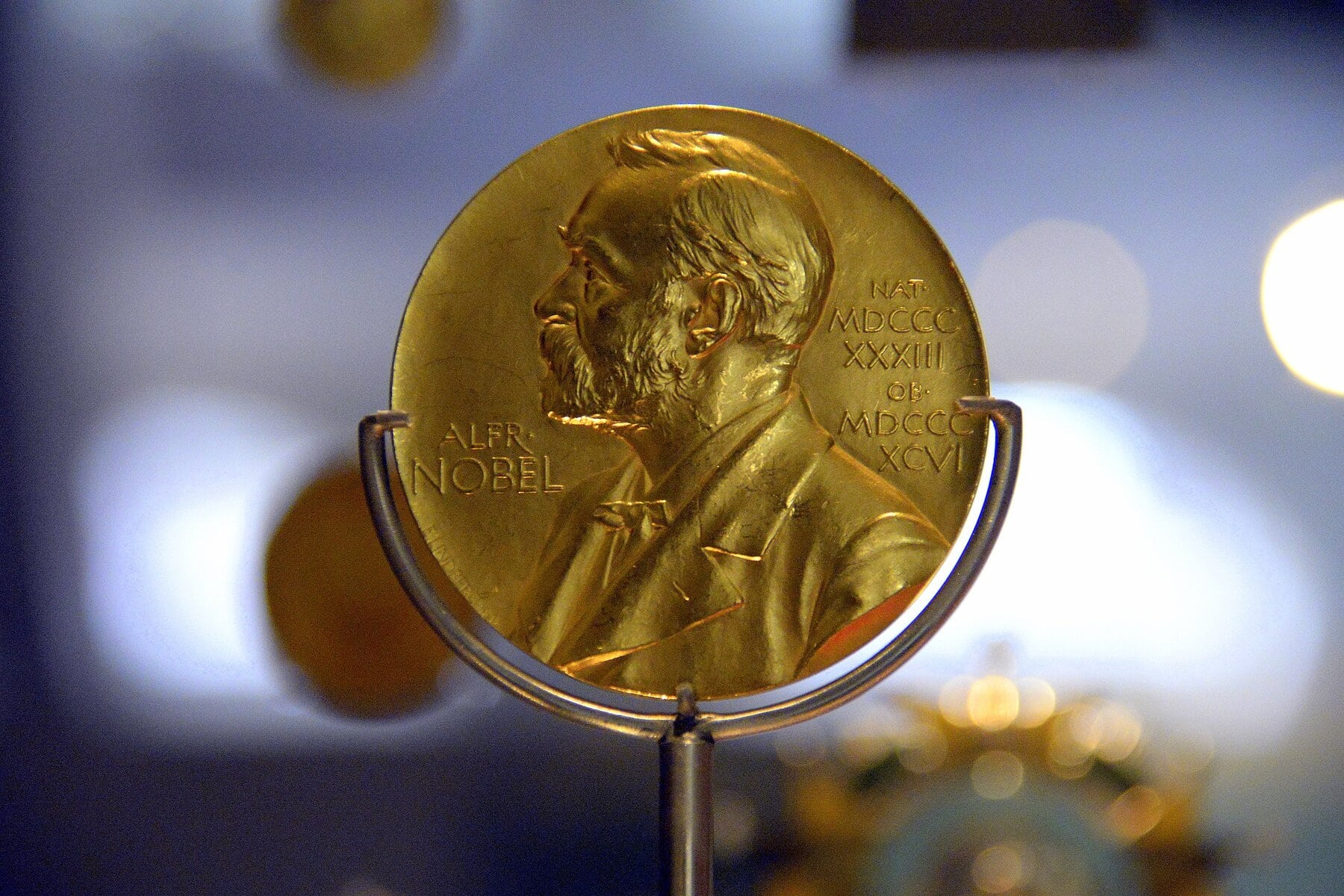Beginning in November 2017, the Niagara-on-the-Lake Public Library has showcased the year’s Nobel Prizes, announced in October, usually beginning with the prizes in the sciences — physics, chemistry and medicine — followed by the economics, peace and literature prizes.
To no one’s surprise, peace prizes are often the most controversial, and the literature prizes sometimes bewildering or disappointing, especially if a writer with a popular following in largely English-speaking countries fails to win, such as Margaret Atwood in recent years.
The Nobel Prizes in the sciences began in 1901, and despite the emergence of a host of other worthy prizes in mathematics, engineering and recently the computer sciences, it remains the gold standard — the one, more than any other award, that is held in the highest esteem by most scientists and engineers.
The reason is simple: the Nobel committees responsible for choosing winners in the sciences consult widely with experts around the world and do their homework.
They also have an eye toward the future and make best guesses about where fields might be going, such as quantum computing and past or current work, which lay the groundwork for certain-to-be very important goals in the future.
One example of this is this year’s prize in physics, which highlights quantum tunnelling for work carried out in the 1980s and 90s, but which is one of the keys to understanding limits to the design of silicon chip computers now and possibly the way forward in the design of quantum computers in the future.
The chemistry prize this year also represents a trend in developing tools for unravelling the structure of existing proteins by harnessing artificial intelligence, as last year’s laureates did with help from Google, or creating novel proteins or molecules for tasks as varied as creating tiny atom-molecule-sized tools or a new class of materials called metal-organic frameworks.
The latter work by this year’s Nobel winners in chemistry began in the 1970s and continues to today’s growing industry with designs to trap poisonous gases, clean up pollution, capture water from dry desert air and a host of other worthy uses.
This points to another goal of the Nobel prizes: the work should be of benefit to humankind, directly or indirectly.
And so most prizes have been. That applies to all the Nobel Prizes, but is perhaps easiest to see in the peace prize and sometimes in the economics prize when they highlight how economic factors affect the lives of ordinary people — not just billionaires or even today’s trillionaires.
Sometimes the achievements for which Nobel Prizes are awarded bridge categories. That was true for gene editing, which was awarded in chemistry, not medicine, despite the fact that most of the hoped-for benefits of editing genomes have been in applied medicine, such as fixing genetic disorders such as thalassemia and sickle cell anemia.
Some people ask me if I have favourites — I do.
The 2020 Nobel in physics awarded work that revealed a giant black hole in the middle of the Milky Way, and in the same year finally acknowledged that Albert Einstein’s theory of general relativity was indeed correct and predicted the structure of black holes.
That was wonderful, as was the year that quantum entanglement at a distance was highlighted and revealed that Einstein’s final challenge to quantum mechanics was wrong and a reminder that even the brightest can be wrong and that Einstein and Niels Bohr could remain close friends despite arguing about the nature of quantum physics — a debate that was never resolved in their lifetimes.
The drama of that debate and the seriousness with which both men pursued it without animosity, only respect, was an amazing lesson that we can disagree while respecting and admiring others.
I was captivated, too, by the 2017 Nobel Prize in physics because it revealed what Einstein had predicted many years before — when massive objects such as black holes collide, they create ripples in space-time as Einstein imagined it in his magnum opus, general relativity.
Here was evidence yet again about how bright the man was but also how talented and committed the scientists and engineers were in the United States who over several decades spanning different presidents and members of the house and senate managed to secure funding and carry out the project to detect gravitational waves so faint that they changed the length of a four-kilometre track by less than the width of an atom.
Think about that. That was an incredible engineering feat supported by a country in those days that supported big ideas and the determination and skills of so many scientists and engineers.
In 2015, the first collision was observed between two black holes and reason enough for awarding a Nobel prize in 2017. The Nobel committee made much the same decision in 2020, a year after the first black hole was actually seen and seen, worthy of a Nobel but tragically too late for Stephen Hawking, who had died.
Do I enjoy the Nobels? You bet — and you might too, when the 2025 Nobel for physics is discussed at the Niagara-on-the-Lake library on Wednesday, Nov. 5 at 2 p.m. You might want to come and see what this Nobel was all about.
Dr. William Brown is a professor of neurology at McMaster University and co-founder of the InfoHealth series at the Niagara-on-the-Lake Public Library.










